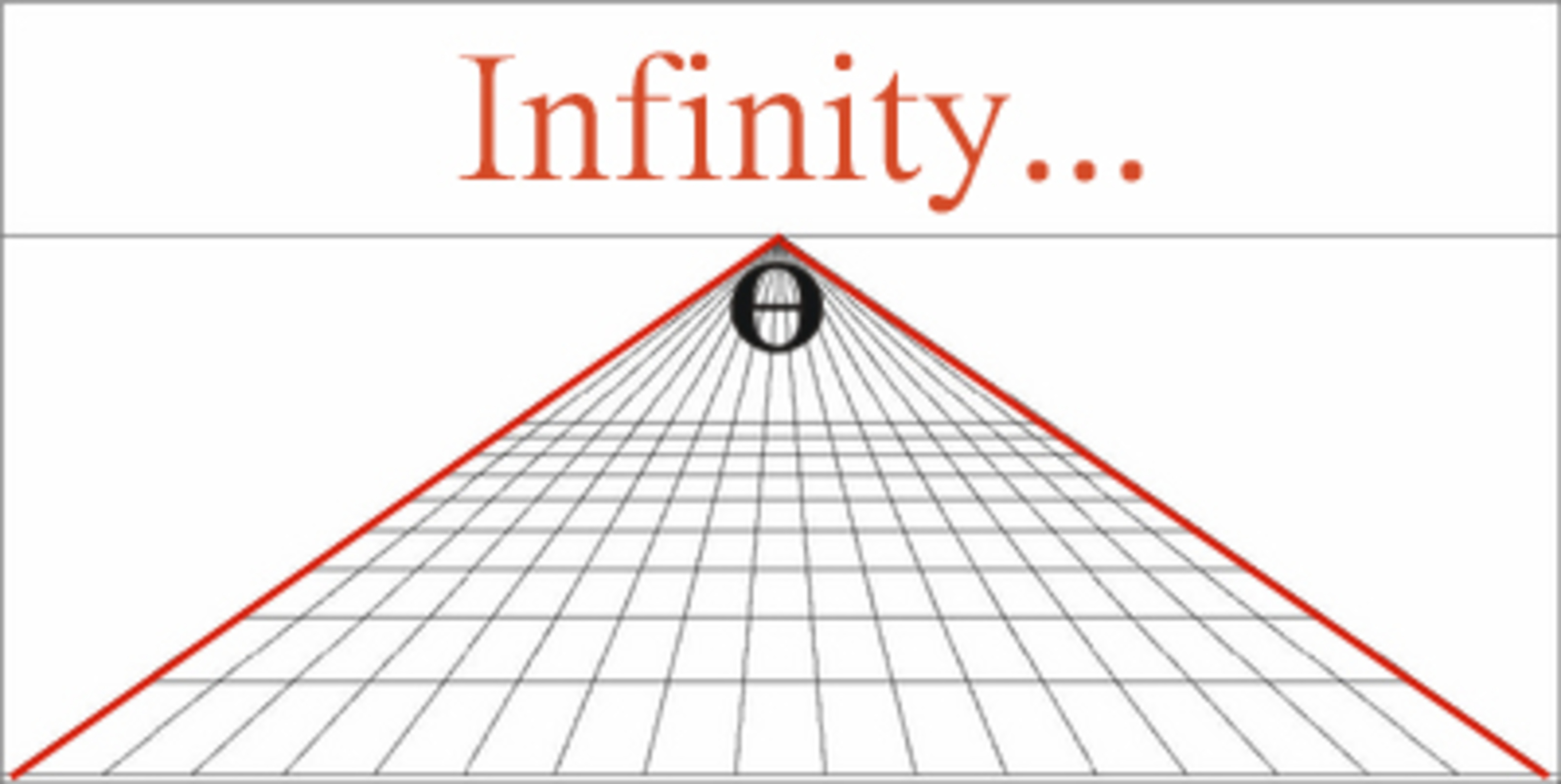Two Lines Meeting at Infinity

If two lines separated by a finite distance meet at infinity, then what is the angle between them?
In the image example, the lines are separated by a distance of 17 squares, but why should this even have an effect?
Obviously the angle can't be more than degrees, and since the lines form a triangle the sum of all angles can't be more than degrees. Is the angle or just infinitesimally small?
Are we even dealing with Euclidean geometry since the lines are meeting at infinity... or do we have to throw the regular rules out the window?
Or perhaps is the angle simply impossible to define?
Share your thoughts please :)
No vote yet
1 vote
Easy Math Editor
This discussion board is a place to discuss our Daily Challenges and the math and science related to those challenges. Explanations are more than just a solution — they should explain the steps and thinking strategies that you used to obtain the solution. Comments should further the discussion of math and science.
When posting on Brilliant:
*italics*or_italics_**bold**or__bold__paragraph 1
paragraph 2
[example link](https://brilliant.org)> This is a quote# I indented these lines # 4 spaces, and now they show # up as a code block. print "hello world"\(...\)or\[...\]to ensure proper formatting.2 \times 32^{34}a_{i-1}\frac{2}{3}\sqrt{2}\sum_{i=1}^3\sin \theta\boxed{123}Comments
Visually, it's a matter of perspective, (literally), but mathematically it might be best to analyze this using limits.
First suppose the two red lines meet at a finite distance from the foreground, in effect forming an isosceles triangle with "base" length 17 and side length x. Then by the Cosine rule we have that
172=x2+x2−2x2cos(θ)⟹cos(θ)=1−2x2289.
Now as x→∞ we see that cos(θ)→1, implying that θ→0.
We're not dealing with Euclidean geometry. This is about the projective geometry
In affine and Euclidean geometry, it is postulated that two parallel lines DO NOT MEET. You now have to extend your framework to projective geometry, where you can have two lines meeting at a "point in infinity"... because of this, everything you just wrote is meaningless.